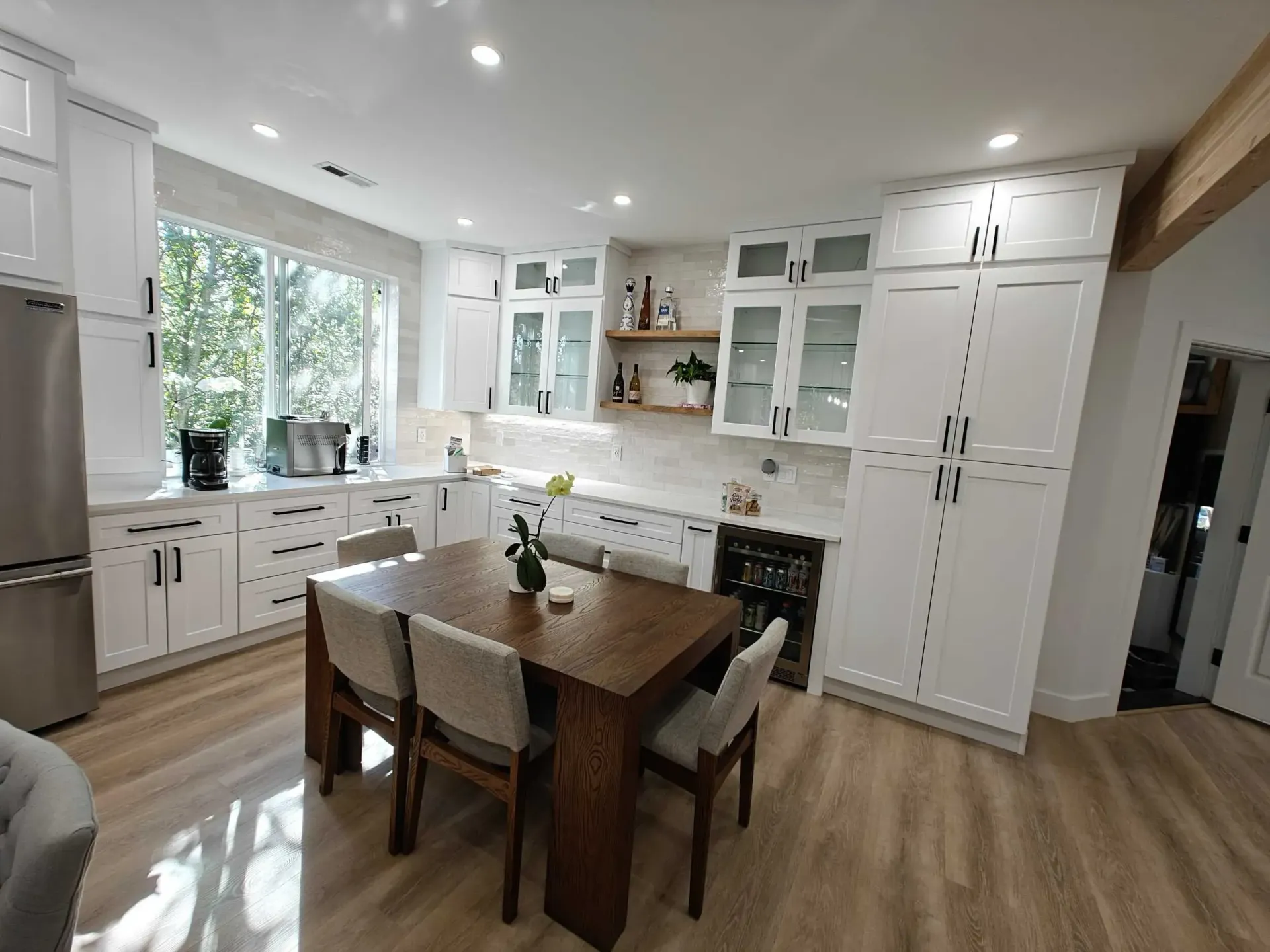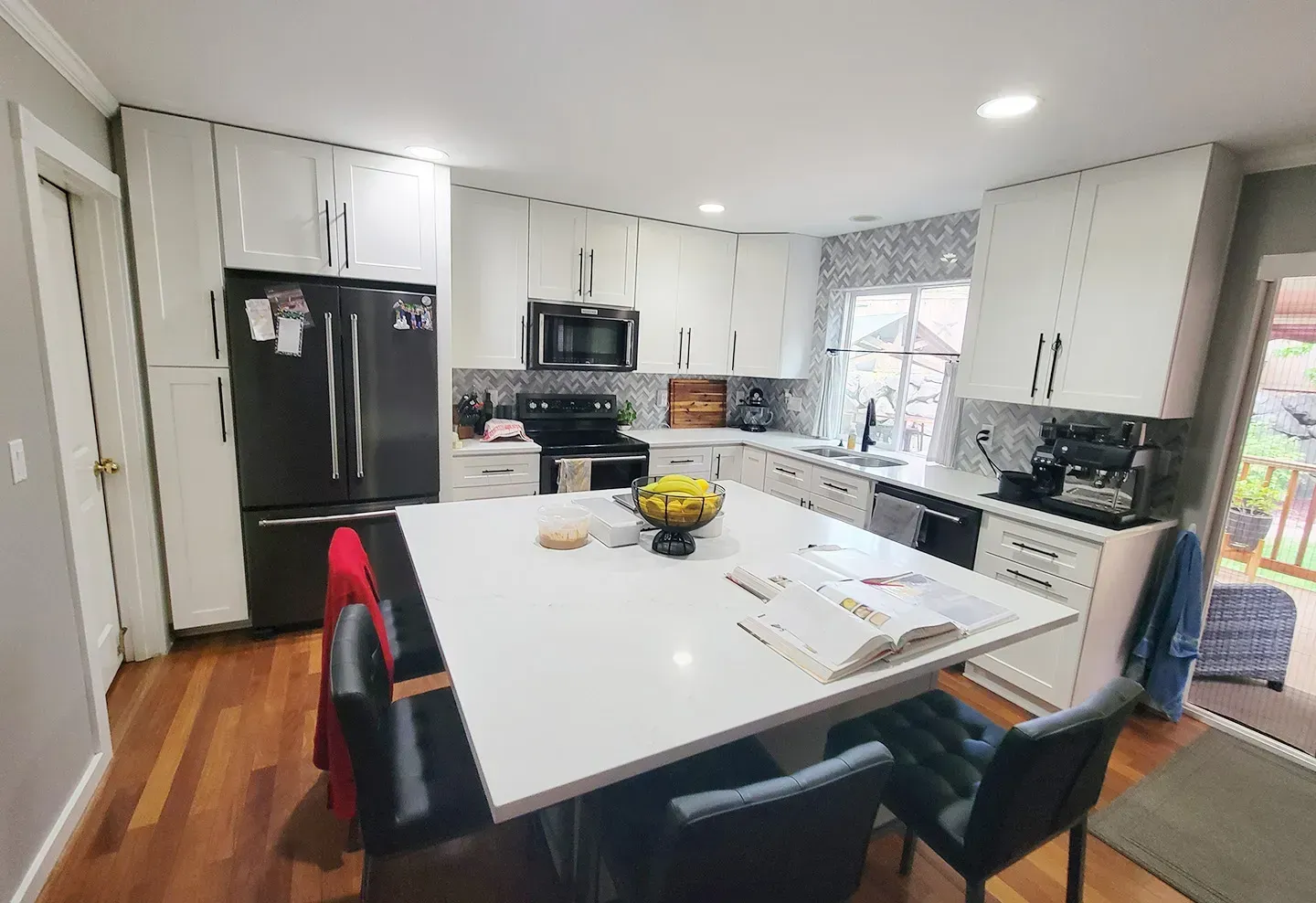
How to Choose the Perfect Vanity for Your Bathroom Remodel
The bathroom vanity is more than just a piece of furniture—it’s the focal point of your bathroom. It sets the tone for the space while also providing essential storage and functionality. Choosing the right vanity can transform your bathroom into a stylish and practical area, but with so many options available, the decision can feel overwhelming.
This guide will walk you through everything you need to know to choose the perfect vanity for your bathroom remodel. From measuring your space to selecting a style that matches your design, we’ll cover every detail to help you make an informed choice.
Measure Your Space Accurately
Before you start shopping for a vanity, measuring your bathroom space is the most important step. An ill-fitting vanity can disrupt the flow of the room, block access to other fixtures, or even make the space feel cramped.
Start by measuring the width, depth, and height of the area where the vanity will go. Ensure there’s enough clearance for drawers and doors to open without obstruction. Leave at least 18–20 inches of space in front of the vanity for comfortable movement, especially in smaller bathrooms.
Don’t forget to account for plumbing. If your pipes are in a fixed position, you’ll need a vanity that accommodates them without major modifications. Taking these measurements ahead of time ensures you choose a vanity that fits perfectly and functions smoothly in your bathroom layout.
Determine Your Storage Needs
Your vanity isn’t just a design element—it’s also a storage solution. Think about how much storage you need based on your bathroom habits and the number of people using the space.
If you’re working with a small bathroom, a single-sink vanity with built-in drawers or shelves can maximize storage without taking up too much space. For larger bathrooms, a double-sink vanity offers more surface area and additional storage compartments, perfect for shared spaces.
Consider features like pull-out drawers, hidden compartments, or open shelving for easy access to everyday items. If you have a lot of toiletries, towels, or cleaning supplies, look for vanities with deep drawers or adjustable shelves to keep everything organized.
Choosing a vanity that meets your storage needs will keep your bathroom clutter-free and functional.
Choose a Style That Matches Your Bathroom
The vanity you choose should complement the overall design of your bathroom. Whether your style is modern, traditional, or rustic, the right vanity can tie the whole space together.
For a modern look, opt for sleek designs with clean lines, minimalist hardware, and finishes like glossy white or matte black. Traditional bathrooms pair well with vanities featuring intricate details, classic wood finishes, and timeless colors like espresso or cherry. If you’re going for a rustic or farmhouse vibe, consider vanities made from reclaimed wood or with distressed finishes.
The material and finish of your vanity also matter. Wood veneers, painted MDF, and natural stone finishes are popular choices. Make sure the vanity’s color palette harmonizes with your tiles, wall paint, and other fixtures to create a cohesive look.
By aligning your vanity’s style with the overall aesthetic of your bathroom, you’ll achieve a space that feels balanced and visually appealing.
Select the Right Countertop Material
The countertop is a key part of your vanity, both in terms of functionality and style. Choosing the right material ensures durability while complementing the overall design of your bathroom.
Popular countertop materials include:
- Quartz: Non-porous, durable, and easy to clean, making it ideal for busy bathrooms.
- Granite: Offers a luxurious, natural look but requires sealing to prevent stains.
- Marble: Timeless and elegant, though it can be prone to scratches and staining.
- Laminate: A budget-friendly option that comes in a variety of colors and patterns.
- Solid Surface: Seamless and low-maintenance, great for a modern aesthetic.
When selecting a countertop, consider your bathroom’s traffic and moisture levels. Materials like quartz and solid surface are perfect for high-traffic bathrooms because they resist water and wear. If aesthetics are your priority, granite or marble might be worth the investment.
The countertop’s color and finish should align with your vanity and bathroom style. For example, a white countertop works beautifully with darker vanities, while warm-toned counters complement wood finishes.
Don’t Forget the Sink and Faucet
The sink and faucet are integral parts of your vanity and play a big role in its functionality and style. Choosing the right combination ensures your vanity works efficiently and looks great.
Sink Types to Consider
- Undermount: Installed beneath the countertop, providing a seamless and modern look. Easy to clean and ideal for minimalist designs.
- Vessel: Sits on top of the counter, offering a bold, decorative statement. Works well in contemporary or rustic bathrooms.
- Integrated: Built into the countertop, creating a sleek, all-in-one design that’s simple to maintain.
- Drop-In: Features a rim that rests on the counter, offering a classic and easy-to-install option.
Faucet Selection
Your faucet should match both the sink and the vanity style. For vessel sinks, taller faucets or wall-mounted options are best. Undermount and integrated sinks pair well with standard-height faucets. When choosing a finish—chrome, brushed nickel, matte black, or brass—consider coordinating it with your bathroom hardware for a unified look.
By carefully selecting the sink and faucet, you’ll enhance your vanity’s functionality and ensure it complements your bathroom’s overall design.
Plan for Proper Lighting
Lighting plays a crucial role in how your vanity functions and how your bathroom feels. Without the right lighting, even the most beautiful vanity can lose its impact. Proper lighting ensures that tasks like grooming, makeup application, and shaving are easy and comfortable.
Types of Vanity Lighting
- Overhead Lighting: A light fixture directly above the mirror can provide even illumination, but it can cast shadows on your face.
- Side Lighting: Wall sconces placed on either side of the mirror reduce shadows and provide balanced lighting for detailed tasks.
- Integrated Mirror Lighting: Some mirrors come with built-in LED lights, offering a sleek, modern solution.
Bulb Choices
Opt for bulbs that mimic natural daylight with a color temperature between 2700K and 3000K. These are bright enough for tasks but soft enough to maintain a welcoming atmosphere.
Layered lighting is the key to a functional and stylish bathroom. Pair task lighting around the vanity with ambient lighting in the room to create a well-lit, balanced space.
Consider Budget and Installation Costs
Budgeting for your vanity goes beyond the upfront cost of the piece itself. Factoring in additional expenses like countertops, sinks, faucets, and installation ensures you have a clear picture of what the entire project will cost.
How to Budget for Your Vanity
- Vanity Unit: Basic vanities can start at $200, while custom or luxury designs can exceed $2,000.
- Countertops: Materials like quartz or granite are more expensive but durable, while laminate is a budget-friendly alternative.
- Installation: Professional installation costs can range from $300 to $1,000 depending on the complexity of the job.
- Plumbing Adjustments: If your vanity layout requires relocating pipes, this could add a significant cost.
Balancing Cost and Quality
While it’s tempting to cut costs, investing in a high-quality vanity will save you money in the long run. Cheaper materials may wear out quickly or require frequent repairs. Look for durable materials that fit your budget without compromising on style or functionality.
By setting a realistic budget and accounting for all related costs, you’ll avoid surprises and ensure your bathroom remodel stays on track financially.
Get Professional Advice if Needed
Choosing the perfect vanity can be overwhelming, especially if your bathroom has unique dimensions, plumbing constraints, or a specific design vision. Consulting with a professional, such as a contractor, designer, or remodeling expert, can save you time and money while ensuring the best results.
Benefits of Professional Advice
- Tailored Recommendations: Professionals can help you select a vanity that fits your space, storage needs, and design preferences.
- Accurate Measurements: They’ll ensure precise measurements, avoiding costly errors.
- Efficient Installation: Experienced contractors can handle plumbing adjustments, secure the vanity properly, and manage any challenges that arise.
- Access to Quality Materials: Professionals often have connections with suppliers, giving you access to high-quality products and finishes at competitive prices.
If you’re considering custom vanities or complex layouts, professional input is invaluable. Their expertise ensures that every element of your vanity—size, style, and function—works seamlessly within your bathroom.
Conclusion
Choosing the perfect vanity for your bathroom remodel doesn’t have to be complicated. By focusing on accurate measurements, storage needs, style, and materials, you can create a vanity that enhances both the functionality and aesthetics of your space. Don’t forget to consider lighting, sinks, and faucets to complete the look, and always budget for installation and potential adjustments.
If you’re feeling uncertain or overwhelmed, professional advice can make all the difference. Experts can guide you through the process, ensuring your vanity fits perfectly and meets your needs.
Ready to transform your bathroom with the ideal vanity? Tubro Construction specializes in bathroom remodeling and more, serving Maple Valley, Tacoma, Covington, Renton, Kent, and Auburn. Contact us today to get started on your dream bathroom!










